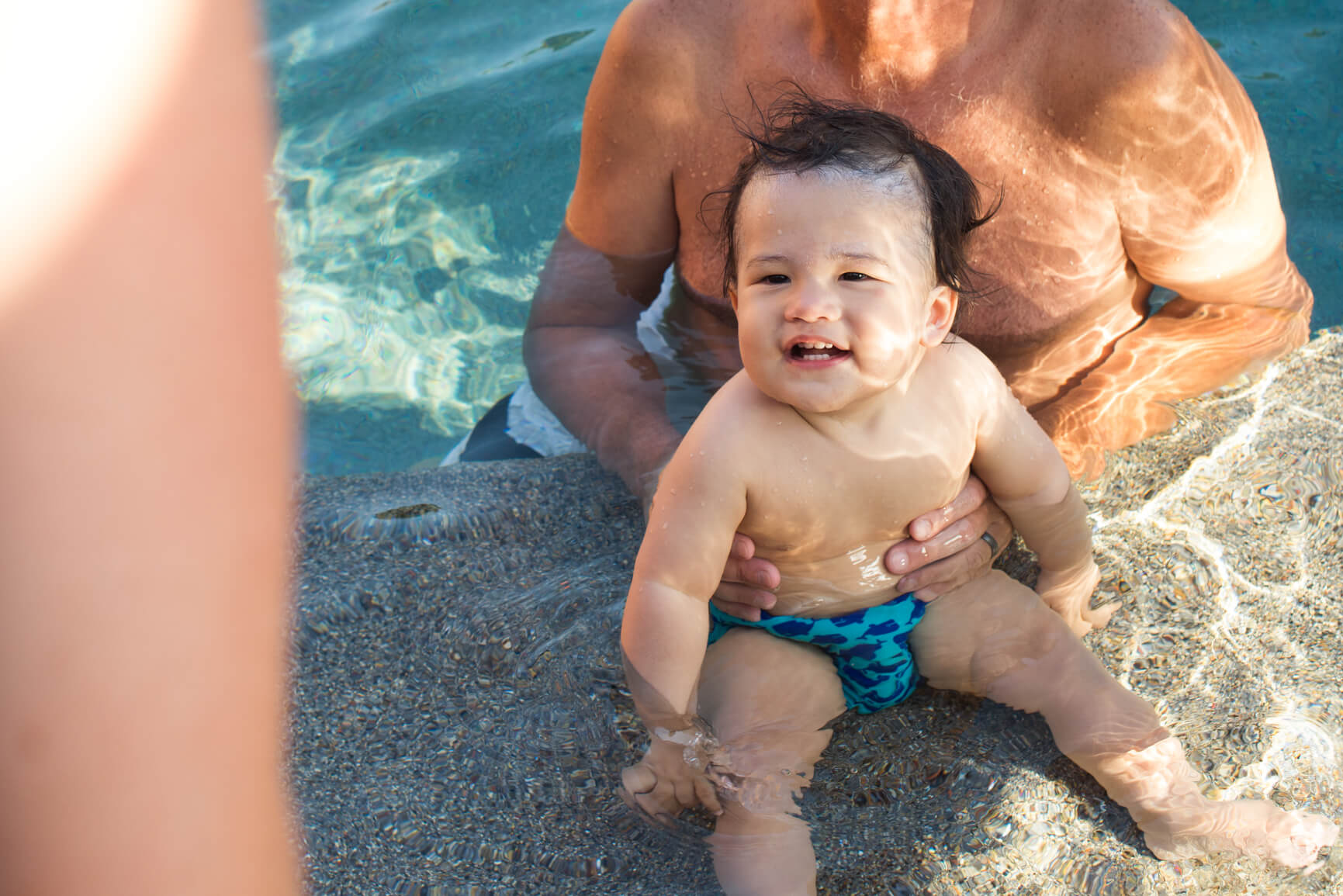-
There’s something quintessentially Australian about spending summer in the pool, wading through creeks, jumping into rivers or paddling at the beach with your family. Swimming is part of our culture; it provides hours of entertainment for families and kids love it.
But sadly in 2015, 26 children under 5 drowned in Australia. That’s why teaching children to swim and understand water safety from an early age is so important.
Swimming coach and water safety advocate Laurie Lawrence is an expert in teaching families how to swim safely together. He shares the benefits of learning to swim early plus some top water safety tips for summer.
Listen to the full interview here:
Listen now: Why kids should learn to swim early

-
4 reasons to teach kids to swim from a young age
- Kids can learn a lot early on. While children don’t develop the fine motor skills for freestyle until the age of 4, they can still get from point A to B in the water at a young age. They can also hold onto the edge or to an adult’s finger by eight months, and it’s important to teach this by 12 months of age so they can help themselves if necessary.
- Swimming aids coordination and development. Children who have swimming lessons from early on build their social, emotional, physical and intellectual capital. And according to one study, they’re also smarter and better coordinated. Additionally, early teaching connects swimming and playing in deep water with fun, happy experiences and makes it enjoyable instead of scary.
- Supervision is key. With constant supervision in the water from an early age, children learn they should never enter the water without an adult watching.
- Learning to float is important. Children who can float and swim without safety devices will be more likely to help themselves if they fall into water, instead of panicking and sinking.
What to look out for when it comes to your child and water
When there is water close by, it’s vital to stay within arm’s reach of your child in case of any danger. Here are a few hazards to be aware of and what you can do to keep your child safe:
- Pool: The gate is the weakest link around the pool, so make sure this is secure with the best latch possible. Don’t leave climbing opportunities like chairs or pot plants next to the fence. Also, keep the water at the highest possible level, so children have the smallest distance to reach when grabbing the side of the pool.
- Backyard: Fishponds, blow up pools and even pet drinking bowls can be hazardous for young ones. Keep these sources of water out of reach at home.
- Beach: Always swim between the flags. Lifesavers can only see so much, so it’s vital to keep an eye on your child at the beach.
For more information on teaching children to be safe in and around water, head to Kids Alive for downloadable resources. And to read more articles about family health, visit Better Families.
-
How to introduce allergy foods
A guide to weaning and allergies
-
Immunisation 101: everything you need to know
Make sure your baby is fully immunised
-
The partner’s guide to breastfeeding
How you can help with breastfeeding
-
Bringing home a new baby during a pandemic
Bringing home a new baby is an exciting yet challenging time.
-
Your new baby admin checklist
A simple guide to ticking off all the paperwork for your new baby.
-
Getting in a routine with your new baby
Paediatrician Professor Harriet Hiscock shares some advice for adjusting to life with your little one, from feeding to sleeping to checking in with yourself.
Subscribe to receive the best from Live Better every week. Healthy recipes, exercise tips and activities, offers and promotions – everything to help you eat, move and feel better.
By clicking sign up I understand and agree to Medibank's privacy policy





